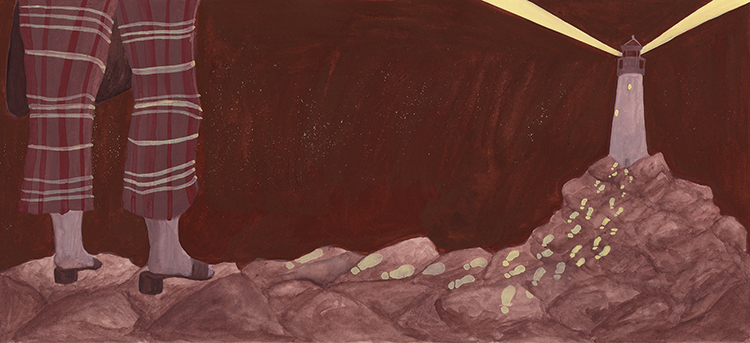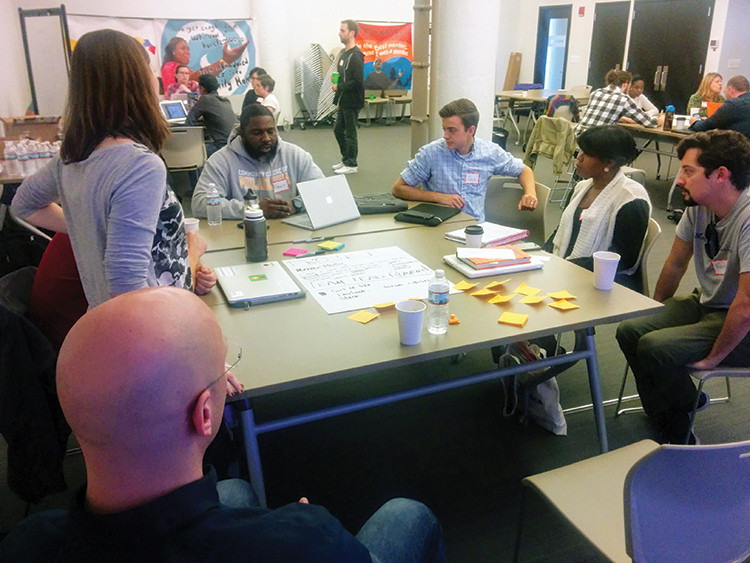Protected Bike Lane Planned for South Street in 2018
City officials announced Dec. 13 that construction will move forward for a protected bicycle lane on a portion of South Street adjacent to the South Street Bridge.
The project, which is expected to be completed in mid-2018, will run along the painted bicycle lane on South Street from 21st Street to 27th Street at the base of the bridge. It will also include 27th Street from Lombard to South. It will include the restriping of the existing paint-buffered lanes and the installation of flexible delineator posts within the painted buffer at South and 27th streets.
“Protected bicycle lanes will create a safe space for people of all ages to bicycle, eliminate loading and parking in the bicycle lane, and clearly separate bicycle space from vehicle space,” said Director of Complete Streets Kelley Yemen.
On Nov. 28, a privately owned trash truck turned near 11th Street in Center City and killed Emily Fredricks, 24, who was biking to work on the Spruce Street bike lane, CBS Philly reported. The news prompted bicycling advocates to again call on the city to move forward with long-awaited protected bike lanes on Pine and Spruce streets.
DVGBC Renamed Green Building United
The Delaware Valley Green Building Council, which advocates for green building practices, is now officially renamed Green Building United.
The U.S. Green Building Council, which previously housed DVGBC, continues to operate through national chapters, and Executive Director Alex Dews wants the organizations to maintain a working relationship together.
The nonprofit took on the regional Passive House and Living Building Challenge organizations a year ago as a way of unifying the local green building movement, said Dews in an email to Grid.
“The proliferation of green building tools and standards beyond LEED/USGBC, as well as our focus on existing buildings that will never interface with above-code rating systems, means that we need to be an independent broker of information on sustainability in the built environment,” Dews said.
New Trail Creates Safer Link Through Tacony Creek Park
The city broke ground Dec. 7 on Phase 2 of the Tacony Creek Trail, which will connect the north and south sections of the 300-acre Tacony Creek Park.
The 0.3-mile trail segment links Phase 1 of the lower trail—completed in 2013—and the upper portion of the trail—completed in the 1970s—which had been divided by the multilane Roosevelt Boulevard. Tacony Creek Trail will eventually span 3.2 miles.
State Invests in Solar Energy, Recreational Sites
Gov. Tom Wolf in November announced $30 million in new grant funding to promote the installation of new solar projects and the manufacture or assembly of
solar equipment.
For solar equipment manufacturing projects, the state’s Solar Energy Program will offer up to $40,000 in loans or $5,000 in grants for every new job created within three years. For new solar panel installations, the program will offer loans up to $5 million or $3 per watt, and grants up to $1 million or $1.50 per watt.
“We all have long known that the future of our country and our commonwealth’s energy economy will include a robust renewable energy sector,” said Gov. Wolf.
Also in November, Gov. Wolf signed legislation requiring that the solar renewable energy credits (SRECs), which are used to demonstrate compliance with Pennsylvania’s Alternative Energy Portfolio Standards Act, must be generated at solar facilities that deliver electricity to the grid in Pennsylvania. Prior to this change, Pennsylvania was one of the few states that allowed out-of-state transactions of such credits.
The state wants to increase the amount of solar electricity generated in Pennsylvania to 10 percent of the state’s total by 2030 through the Finding Pennsylvania’s Solar Future project, which is led by the Department of Environmental Protection.
“Keeping the supply in state will likely increase the value of SRECs, providing a major boost for residents with solar panels who provide electricity to aggregators,” said DEP Secretary Patrick McDonnell in an op-ed for PennLive.
On Dec. 5, Gov. Wolf announced an investment of $44 million for 266 projects across Pennsylvania to “create new recreational opportunities, conserve natural resources and help revitalize local communities.”
Heritage Areas will also receive $2.36 million for improving trails, improving signage, and planning and marketing heritage tourism events.
The grants were awarded through the Department of Conservation and Natural Resources’ Community Conservation Partnerships Program.
The department received 442 applications requesting more than $87 million in project funding.
“The fact that the state must deny nearly 40 percent of grant requests received reveals how underfunded these programs are. The needs facing our commonwealth are great, and they grow exponentially with each year we ignore them,” said Andrew Heath, executive director of the Growing Greener Coalition. “The commonwealth must address these funding shortfalls.”
Report details health impacts of refinery
Environmental justice advocates at Philly Thrive released a survey report in November detailing the energy-infrastructure concerns of more than 300 citizens, most of whom live near Philadelphia Energy Solutions’ oil refinery, in South and Southwest Philly. The PES refinery is the largest of its kind on the East Coast.
Residents in these communities reported significantly higher rates of asthma than the national average. More than half of the respondents reported living with health conditions such as heart disease and cancer.
Ninety-five percent of those surveyed want the city to consider making PES pay for damages they may have caused.
The survey was submitted to Philadelphia’s Office of Sustainability as part of Philly Thrive’s #WeDecide campaign, which began in May 2017. The residents’ top priority for giving additional feedback as the city develops an energy master plan is to have more community meetings with city officials present.









